By Manya Koetse, further research and news-gathering by Miranda Barnes
From panic to patriotism, the outbreak of the coronavirus has led to a wide range of different responses from Chinese netizens and online media outlets over the past few weeks.
Although the first reports on the emergence of a pneumonia-like illness in the city of Wuhan came out in late December, it wasn’t until mid-January that the new virus, belonging to the coronavirus family, started dominating the top trending lists on social media in China and beyond.
The hashtag “Nationally Confirmed Cases of New Pneumonia” (#全国确诊新型肺炎病例#) became one of the biggest news-related topics we have ever seen on Weibo, receiving eight billion views by January 25, and reaching a staggering 13,5 billion views by February 2.
As of February 6th, approximately 28,200 cases of the new virus were confirmed, with over 170 cases reported in countries outside of China. The death toll also became much higher than days before, rising to 564. With these numbers, the coronavirus has exceeded the scale of the 2003 SARS outbreak in terms of infected patients.
Along with the quick spread of the new coronavirus across the country, the general mood and direction of the discussions and trends in the Chinese online media environment have also been in constant flux.
At What’s on Weibo, we have been glued to our social media screens, but because editor-in-chief Manya Koetse has been flooded with daily media requests we have not been able to update the site with regular updates (meanwhile, @manyapan did post regular updates on Twitter).
Here, we will highlight some of the main social media trends we spotted during the outbreak of the new Chinese coronavirus, now and over the past weeks.
TREND #1:
Online Backlash against the Eating of Wild Game
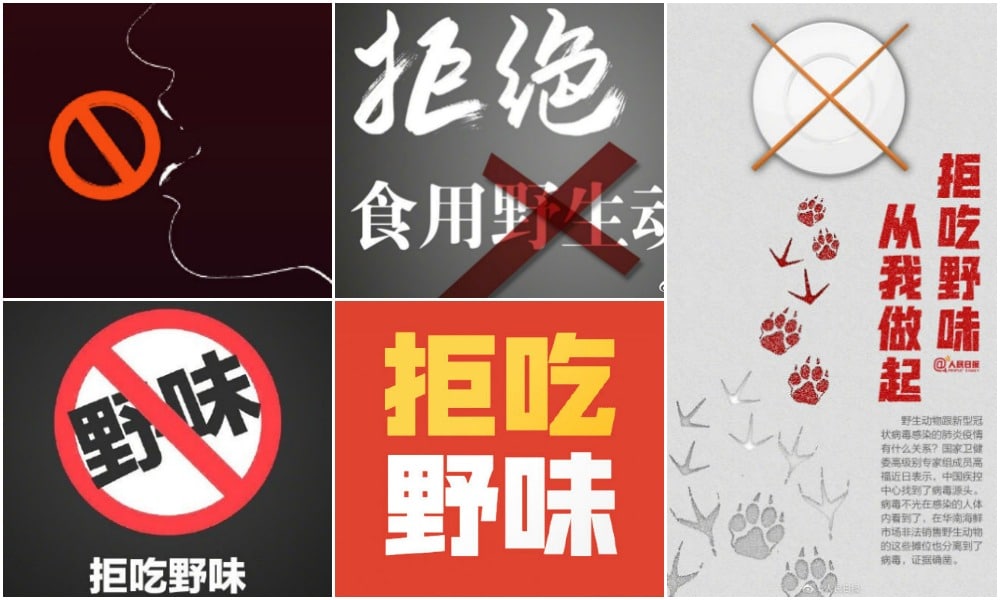
As an online media panic broke out around January 20, when a third person had died of the new Wuhan virus, one of the main trends to come up on Chinese social media was an online backlash against the eating of wild game (as reported here by Jessica Colwell).
The backlash flooded Weibo after the downtown Wuhan Huanan Seafood Wholesale Market (武汉华南海鲜批发市场), selling a wide range of dead and alive wild animals – anything from snakes and crocodiles to rats, hedgehogs or bats, – was identified as the suspected source of the deadly coronavirus outbreak.
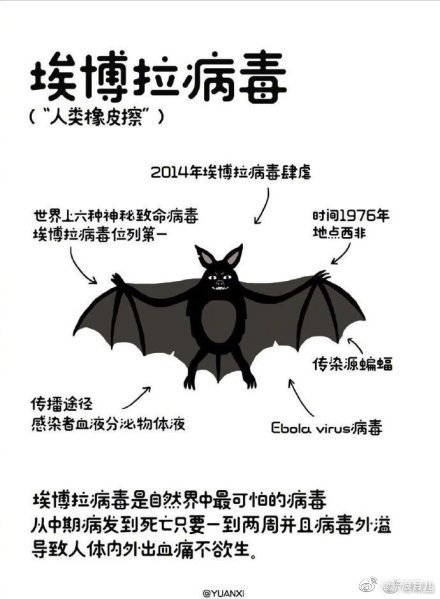
Image posted by Sina Parenting on February 1st.
Since Chinese researchers linked the novel coronavirus (nCoV-2019) to bats, videos and images of bat dishes and people eating bat soon made their rounds on social media.
Many of these videos were actually unrelated to Wuhan, but were used in condemning the practice of eating (illegal/unsafe) wild game in general.
Around January 23, hashtags such as “Support the Banning of Wild Game Markets” (#支持禁绝野味市场#), “Refusing Eating of Wild Game Starts with You” (#拒吃野味从我做起#), “Control Your Mouth, Refuse Wild Game” (#管住嘴拒绝吃野味#) went viral on Weibo.
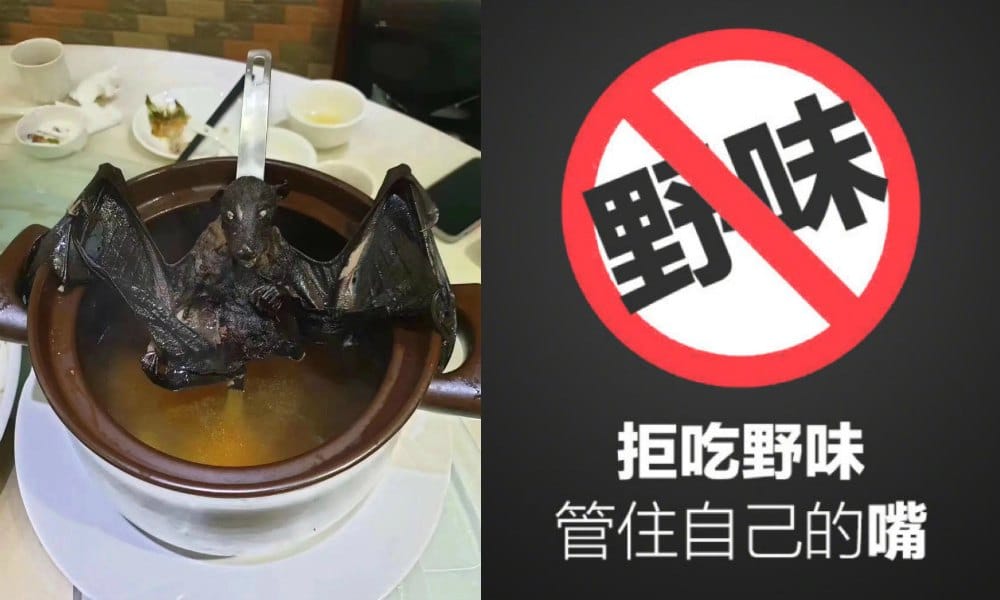
As images or videos of people eating bats or other exotic animals soon also spread to Twitter and other non-Chinese social media, some English-language media labeled them as “xenophobic” or “racist” – ignoring the fact that the anti-wild game storm actually started in the Chinese online media environment.

Online information leaflet spread by People’s Daily, “Resisting the Consumption of Wild Game Starts with Ourselves”
State media outlets such as People’s Daily, for example, played a role in the online dissemination of information against the eating of wild game and actually hosted some of these hashtag pages on Weibo.
The main argument behind the backlash is that those eating (unsafe, illegal) exotic and/or wild animals could risk their own health and that of their community and that what you eat is also your responsibility in keeping others safe.

A news story of a man hunting wild animals for consumption made its rounds on Weibo this week.
The backlash against the eating of wild game and online anger against people hunting or illegally buying wild animals for consumption is still ongoing, with some directing their anger against Wuhan people in specific.
This has also triggered discussions on Weibo about discrimination – not against Chinese people in general, but against Chinese netizens discriminating against Wuhan people or even against people from the Hubei province.
TREND #2:
Fake News and Censorship

Chinese social media platforms such as Weibo are tightly controlled online environments. When certain sensitive topics pop up, such as the anniversary of the Tiananmen protests, the Hong Kong demonstrations in their early phases, or big political events, virtually all related posts and news sharing will sometimes be removed by online censors.
In the wake of the coronavirus outbreak, this was not necessarily the case. From the start, there was a lot of reporting, sharing, and discussion of the virus online.
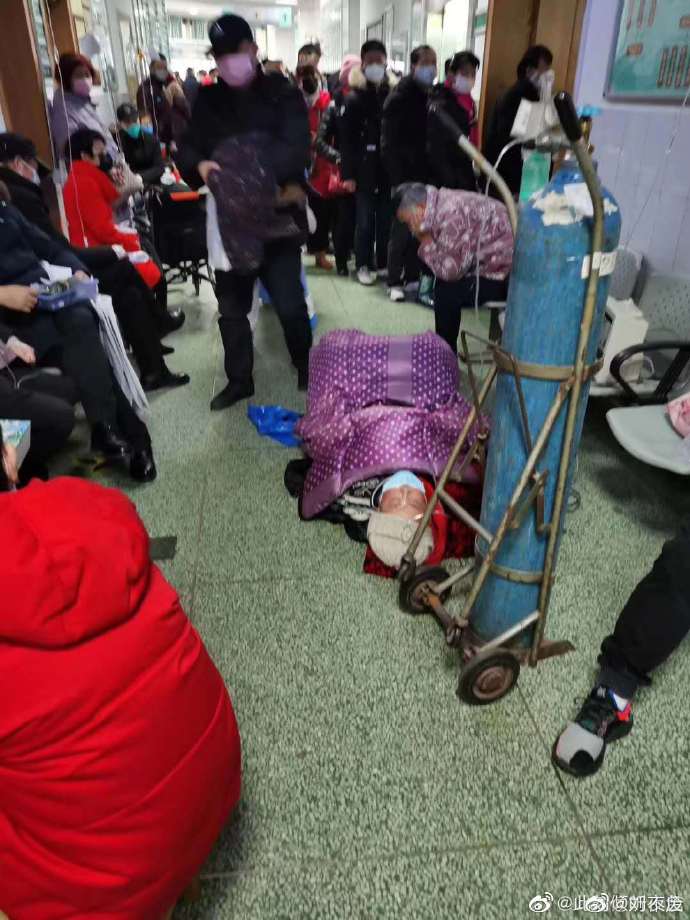
However, there certainly has been ongoing censorship of the topic. This was mainly done in the case of netizens reposting videos of chaotic situations in streets or at hospitals, but also in the case of ‘fake news’ posts (mostly called “starting rumors”).
Posts that could potentially trigger unrest or panic also were censored. One hashtag that made its rounds around January 22 was “Escaping Wuhan” (#逃离武汉#), with people trying to leave Wuhan before the city would go on lockdown. That hashtag page was soon completely removed from Weibo.
The comments sections of some posts reporting on controversial or sensitive news were also completely turned off (such as this report addressing local authorities in Wuhan allegedly taking donated face masks).
Confirmed with my friend that yes she’s been sending me
a video of an alleged Wuhan hospital scene through WeChat, but it’s not coming through in our private #WeChat conversation. pic.twitter.com/UOy5Fhm8Np— Manya Koetse (@manyapan) January 24, 2020
One Weibo user (@魔女小稀), an alleged nurse, posted a video of people in a hospital hallway on January 24th, claiming that “three [dead] bodies” had been lying in a Wuhan hospital for the entire afternoon covered in white sheets without being removed.
The post and the Weibo user were completely removed from the platform on January 25. By that time, however, the video and allegations were already picked up and reposted internationally.


According to Sina News, the post had been completely false; there were no bodies lying around this Wuhan hospital. If there were people covered in white sheets, it was merely people sleeping in the hallway after waiting for a long time.
This is but one of many examples of ‘fake news’ floating around Chinese social media over the past two weeks, with images and videos being placed in a misleading context, people claiming that patient or deceased numbers were much higher than those reported by the official media, and some even bringing up conspiracy theories about the source of the coronavirus (e.g. that the Americans started it, that it leaked from a biolab in Wuhan, etc).
The problem in this issue is, of course, when do we call it ‘fake news’ and when do we call it ‘censorship’? Amid the chaos and uncertainty of the coronavirus outbreak, it is not always easy to separate the two.
This is also a contributing factor in the general distrust in official media reports that clearly surfaced on Weibo over the past weeks. “I don’t believe it,” is a sentence popping up everywhere on social media.
Spreading online “rumors” is a crime under China’s Criminal Law and is punishable by up to seven years in prison. Although some foreign media outlets, such as this one, make it seem as though it is illegal to share fake news about the coronavirus in particular, it is actually illegal in China to share fake news in general.
TREND #3:
Virus Vigilantism

Another trend we noticed on social media during the wake of the coronavirus outbreak is not just a distrust in official media and authorities, but also distrust in fellow citizens.
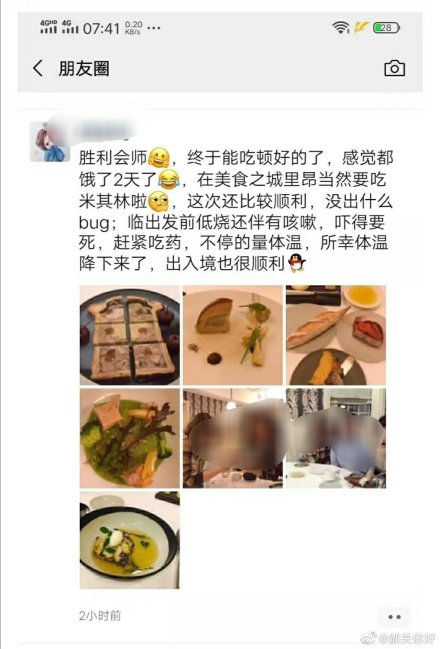
One clear example that blew up on Weibo is that of a young woman from Wuhan who posted about her traveling to France – and enjoying nice food – despite suffering from a fever and cough. Because she took fever reducers, she claimed to have passed airport temperature monitors without issue.
The post sparked great anger among Chinese netizens and triggered the so-called ‘human flesh search engine,’ with people digging into her personal details.
The incident even led to the Chinese embassy in France investigating the matter. The woman turned out not to have been infected with the virus.
But there are many examples of people exposing and doxing those who allegedly are hindering the collective goal of minimizing the risk of a further spreading of the virus, for example by not self-isolating after visiting Wuhan.
There’s also been widespread online condemnation of people stealing tissue paper from public elevators. Many apartment buildings around China now provide a box of tissue paper for hygienic reasons so that people do not need to touch the elevator buttons.
There’s been an ongoing trend of people being exposed on Chinese social media for stealing the tissue boxes now placed in many Chinese apartment elevators (to minimize bacterial levels on elevator buttons in times of #coronavirus). This is but one of many of these videos. pic.twitter.com/A1HAXNZWfQ
— Manya Koetse (@manyapan) February 4, 2020
Surveillance videos of people stealing these boxes have been making their rounds on Weibo and WeChat, such as this lady in an elevator in Chongqing, with thousands of netizens expressing their anger over their behavior – and sometimes naming and shaming them.
TREND #4:
Social Media as a Practical Communication Tool
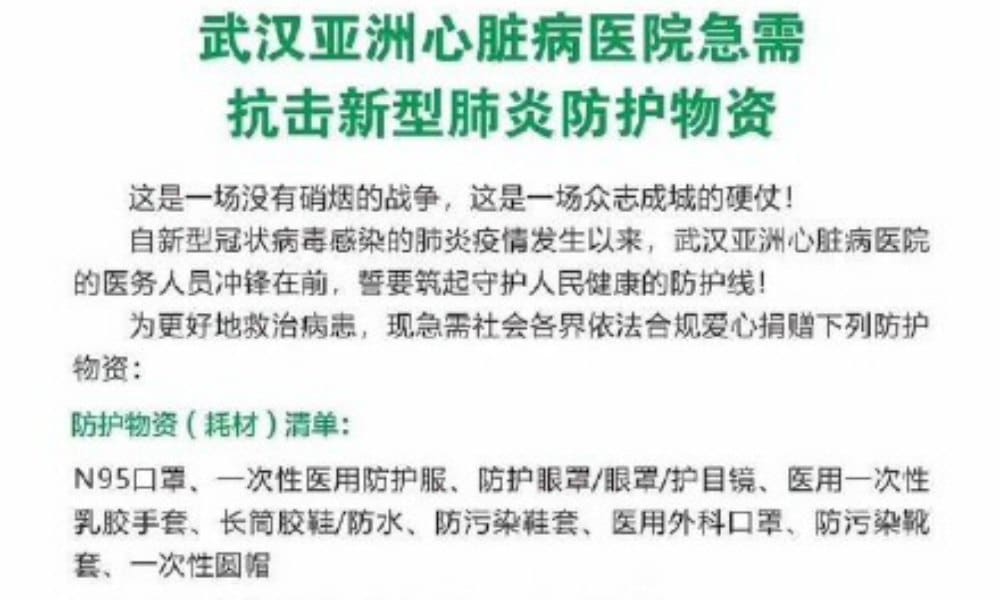
Soon after the scale of the coronavirus outbreak started to become clear, social media platforms such as Weibo were started to be used as practical communication tools for authorities, (medical) organizations, and individuals to spread information or to ask for help.
Social media is now widely used as a practical communication tool for very general matters in the coronavirus crisis (e.g. providing information on how to avoid getting the virus), but also for more specific issues.
FYI the no 1 trending topic of the day is the news that Wuhan hospitals are running out of supplies (hashtag #武汉多家医院物资紧张, 270 million views), hospitals & media are urgently requesting funds & contributions. pic.twitter.com/bSENdSL3kh
— Manya Koetse (@manyapan) January 25, 2020
Various hospitals in Wuhan, for example, spread digital leaflets online summing up their specific shortages in supplies (face masks, surgical gloves, etc), and how people and organizations can contribute.
How Weibo becomes an important communication tool in the handling of #coronavirus. Harbin Center Disease Control PSA: anyone who was on the 20:33 G1278 train carriage 2 from Hankou to Beijing: 3 Wuhan passengers possibly infected, warning passengers to stay indoors if at home. pic.twitter.com/tLPzBRsB5b
— Manya Koetse (@manyapan) January 24, 2020
Another example is how authorities at various times use social media to search for people who were on board of certain trains or where passengers were later diagnosed with the virus.
But we have also seen individuals reaching out through social media. One woman, for example, reached out to netizens online after she and her husband fell ill and needed someone to look after their children.
Through the help of social media, there are now also local volunteers who help taking care of people’s pets while they are unable to return home to feed them.
One of the hashtags increasingly receiving attention online since early February is “Rescuing the Pets Left Behind in Wuhan Homes” (#武汉滞留家中宠物救援#).

Since January 26, Tencent’s WeChat has also opened a special “epidemic supervision” channel within its app where WeChat users can go to get the latest local information about the virus in their area or ask for medical help.
TREND #5:
Propaganda, Pride and Patriotism in Times of Crisis

The outbreak of the coronavirus coincided with the most important holiday of the year in China: the Spring Festival. On Friday, January 24, the CCTV broadcasted its annual Spring Festival Gala (Chunwan), a 4-hour long show that has been airing since 1983. The show is the biggest live TV event in the world, with a viewership of one billion.
The show is usually meticulously planned up to every second – with rehearsals starting months before -, but this year, for the first time ever, it included a segment on the Wuhan coronavirus outbreak. It showed scenes from inside a Wuhan hospital, and the show’s main presenters paid their respects to all the medical workers working day and night.
In light of Wuhan coronavirus outbreak, CCTV puts out a performance paying tribute 🙏 to first line healthcare professionals. This is currently trending as “The Only CCTV Spring Festival Gala Program Without Rehearsal”. #央视春晚 pic.twitter.com/6D89UMlsFw
— yz奥奥 (@midnightbliss01) January 24, 2020
The event became trending on Weibo under the hashtag “For the First Time in History, ‘Chunwan’ Includes a Non-Rehearsed Segment” (#春晚历史上首次没有彩排的片段#)
It was during this time, with twenty million people under travel lockdown, that the sentence “Jiayou Wuhan, Jiayou Zhongguo” (“Come on Wuhan, Come on China”) was propagated by state media and became widely used on Chinese social media.
By now, the hashtag “Go Wuhan!” (#武汉加油#, hosted by Party newspaper People’s Daily) has over 12 billion views on Weibo.

“1.4 billion Chinese salute you”
Medical staff at the dedicated isolation ward of Wuhan’s People’s Hospital wish everyone a Happy New Year, saying: “We’re here, don’t worry [and celebrate Spring Festival]” – a hashtag that’s now propagated online to ease the #coronavirus panic. #有我们在大家安心过年 pic.twitter.com/byWLd8DJ1i
— Manya Koetse (@manyapan) January 24, 2020
Starting from the Spring Festival weekend, Chinese state media began to propagate more positive, patriotic, and nationalistic messages online during the corona crisis, focusing on the unity of China and the dedication and resilience of common Chinese people, with a specific emphasis on medical and army staff.

It is not uncommon, or actually rather common, for Chinese authorities and state media to propagate nationalism in times of hardship (also see our article on online propaganda during the Hong Kong protests).
TREND #6:
Quarantine Boredom: From Panic to Humor
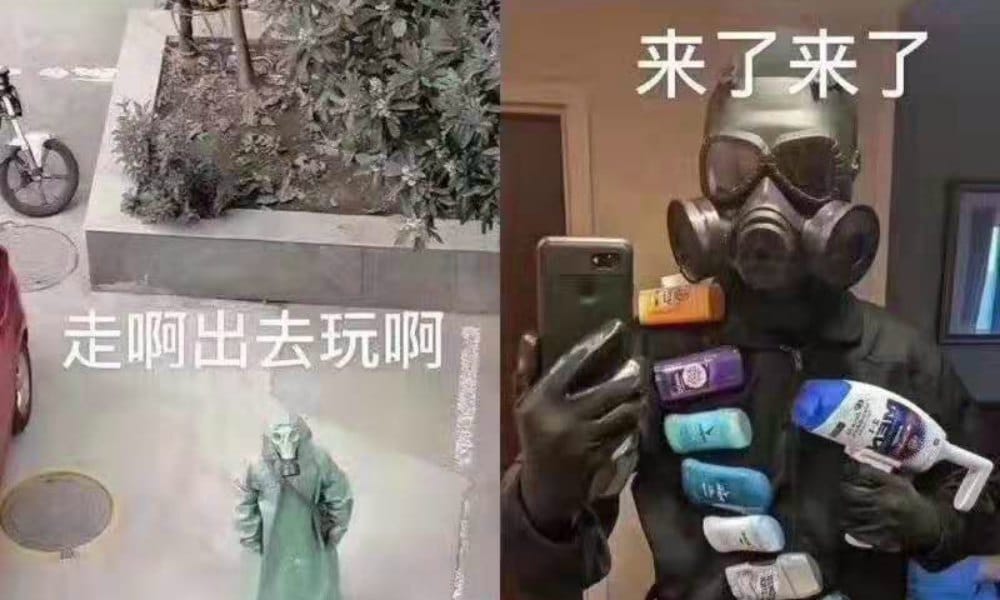
From late January, the first humorous memes and videos starting flooding Chinese social media in light of the coronavirus.
Around January 25, there were over forty confirmed deaths due to the new coronavirus and over 1380 known infected patients. Along with the travel lockdown, most of the major tourist attractions across China had shut down, and driving bans were implemented in the city of Wuhan to restrict people’s movements in efforts to contain the outbreak.
What was supposed to be a time of joy and reunion and entertainment (the Chinese New Year) turned into a time of fear and self-isolation for many families in Wuhan and beyond.
Practically locked up in their homes, some people used humor as a ‘defense mechanism’ in times of coronacrisis.
The videos embedded in the thread below are some examples of people making the most of their times in lockdown.
How to survive staying indoors during #coronavirus lockdown according to these very important videos making their rounds on Chinese social media. Firstly: don’t be afraid to express your feelings and get in touch with your emotions. pic.twitter.com/xd8yj73dtx
— Manya Koetse (@manyapan) January 27, 2020
“What’s the situation in Beijing like now?”
[Posts photo of empty shelves Durex condoms]
“This is the situation in Beijing.”#wechat #coronavirus pic.twitter.com/DdEbLKkhOp
— Manya Koetse (@manyapan) January 28, 2020
But besides the creative solutions of people avoiding boredom inside the home, there were also many memes going around WeChat and Weibo making fun of the extreme measures taken by people and authorities, such as this photo below that was allegedly taken at a station in Yiwu, Zhejiang, saying: “Some people got off the train in Yiwu but thought they’d ended up in Saudi Arabia.”
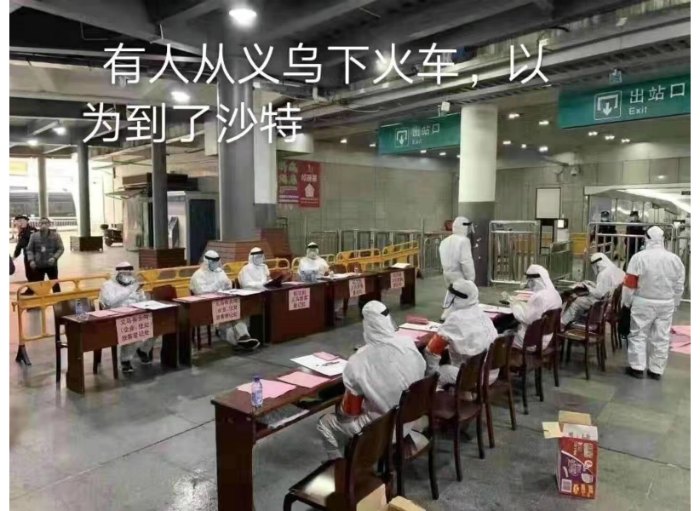
There was also this viral image below of an office canteen where people were self-isolating for safety reasons, saying: “Eating at the cantine of my unit now feels more like taking an exam.”
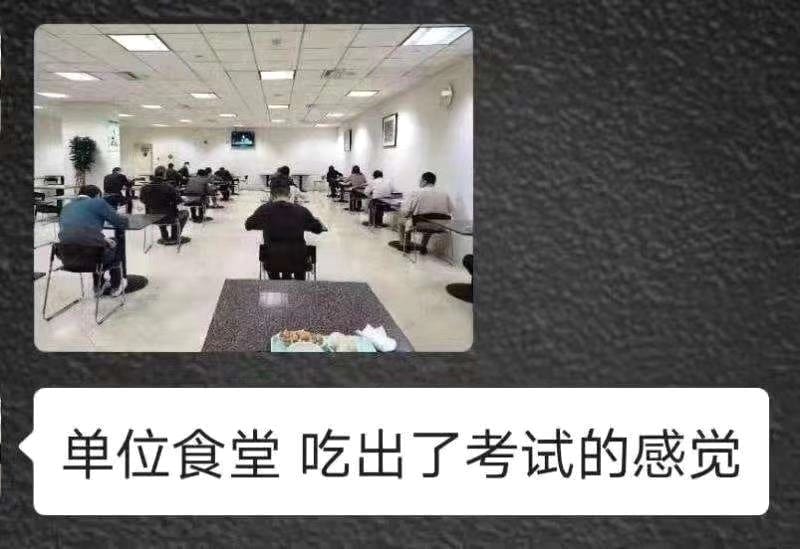
Videos and images of people using sanitary pads, bras, plastic bags, or even fruit to protect their faces due to a scarcity of face masks also continue to make their rounds on social media, with people sometimes mocking neighbors, their friends or family, or even themselves in the extreme and sometimes silly measures they are taking to avoid getting the coronavirus.
We’ve reached a point where people are starting to wear inflatable costumes on the streets to protect themselves against the #coronavirus. According to Chinese media, a medical expert said this is “unnecessary” and that washing hands and wearing face masks will do 😂😂😂 pic.twitter.com/OvhOD76kum
— Manya Koetse (@manyapan) February 6, 2020


We’ve gotten to a point where I am seriously doubting if this is 100% serious, 100% joke, but I’m going for a bit of both. “We’re out of face masks, so now I use this.” #coronavirus pic.twitter.com/1LVuCFvYUo
— Manya Koetse (@manyapan) February 2, 2020
TREND #7:
Anger against Local Authorities and Illegal Lock-Ins
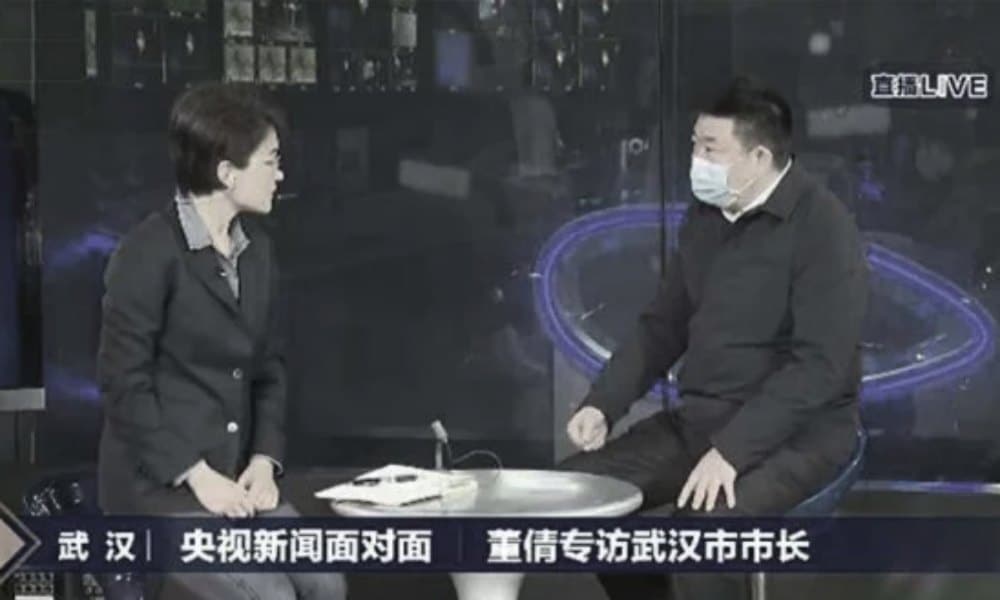
As panic over the spreading coronavirus has become bigger over the past few weeks, the voices criticizing local authorities and organizations for mishandling the situation have also grown louder.
While loud criticism of the central government is usually censored before triggering bigger discussions, there has been ample criticism of provincial, city, and county authorities and organizations – and not without consequence.
In Hubei, local authorities have been criticized for, among others, initially censoring reports of an emerging new illness in December of 2019.
The mayor of Wuhan, Zhou Xianwang, became a major target of netizens’ anger. In late January, Zhou admitted that he had failed in disclosing information in a timely manner and also “did not use effective information” to improve the local government’s work.
The Hubei branch of the Red Cross Society of China (RCSC, 中国红十字会) also received massive criticism online in early February when it turned out that, while the public donated medical supplies and money, most of it remained in the Red Cross warehouse.
On February 4, Chinese state media reported that the Hubei Red Cross deputy director had been removed from office and dismissed from the leading Party members group of the RCSC branch.

On village and prefecture-level, there has also been public condemnation of how authorities are handling the corona crisis.
Some videos going around social media showed how people, seemingly against their will, were locked up inside their own homes by local authorities after returning from Wuhan (“武汉返乡人员”).
China Youth Daily, the official newspaper of the Communist Youth League of China, also condemned these practices as “illegal” and “inhumane” in an article that has since been deleted.
Through a new WeChat function mentioned earlier in this post, Chinese netizens can now also report any mishandlings of the coronavirus situation.
At the time of writing, there seems to have been some increased censorship, but nevertheless, criticism on local authorities keeps flooding Weibo.
“While people are busy helping themselves and each other, what are the leaders of Hubei and Wuhan doing?”, some people wonder: “Supplies in the hospitals are still scarce, there are still people who are unable to receive help!”
TREND #8:
Corona Panic Buying

It was around January 21st when the coronavirus panic reached a peak in China; a third infected patient had died of the virus the day before, the first cases were confirmed outside of China, and several big travel platforms had started to offer refunds or change flights via Wuhan.
Similar to the SARS outbreak in 2003, news of the coronavirus led to waves of “scare shopping” – a trend that also became very visible on social media.
Medical face masks soon sold out in Chinese pharmacies and on e-commerce platforms: around 80 million face masks were sold on Alibaba’s Taobao platform alone on January 20 and January 21st. Those (online) shops still offering face masks exploited the shortage of face masks, and would only sell them at exorbitant prices.

Twenty dollars for a face mask?
Although Alibaba soon announced it would remove sales of face masks from shops that were selling them at unstable prices, the sales and availability of (disposable) N95 masks is still an issue across China, with netizens complaining about it on Weibo every single day.

Another example of consumer panic followed the Jan 31st reports by two medical research institutions on the TCM oral medicine Shuanghuanglian, which would allegedly be effective in combating the new coronavirus.
Shortly after the reports came out, the herbal remedy sold out in stores across the country.
Chinese state media now warn people against “irrational purchases,” saying that the effectivity of herbal remedies such as Shuanghuanglian is still unsure.
Panic buying is a trend that is not just visible on Chinese social media, it is a trend that also seems to be triggered through social media, with rumors and reports of existing shortages of certain products leading to panic.
A clear example is the February 5 run on toilet paper in Hong Kong after rumors spread that the coronavirus outbreak would lead to insufficient supplies.
OK, Hong Kong, I totally get the surgical mask panic. We all do. But pray tell. what’s up with the run on toilet paper? Are y’all really buying this rumour that China will boycott HK for… Toilet paper ? pic.twitter.com/kb9e0flFyd
— Wang Feng 王丰 (@ulywang) February 5, 2020

As there are still many new developments and news reports coming out concerning the coronavirus, we will keep on publishing more on What’s on Weibo about what’s trending on Chinese social media. (Also read: Distrust and despair on WeChat and Weibo after the death of Wuhan whistleblower Li Wenliang).
If it’s quiet here, please also follow us on Twitter here and here.
By Manya Koetse, additional research and news-gathering by Miranda Barnes
Follow @whatsonweibo
Spotted a mistake or want to add something? Please let us know in comments below or email us. First-time commenters, please be patient – we will have to manually approve your comment before it appears.
©2020 Whatsonweibo. All rights reserved. Do not reproduce our content without permission – you can contact us at info@whatsonweibo.com.
The post Coronavirus on Chinese Social Media: The 8 Major Trends in Times of the 2019-nCoV Crisis appeared first on What's on Weibo.